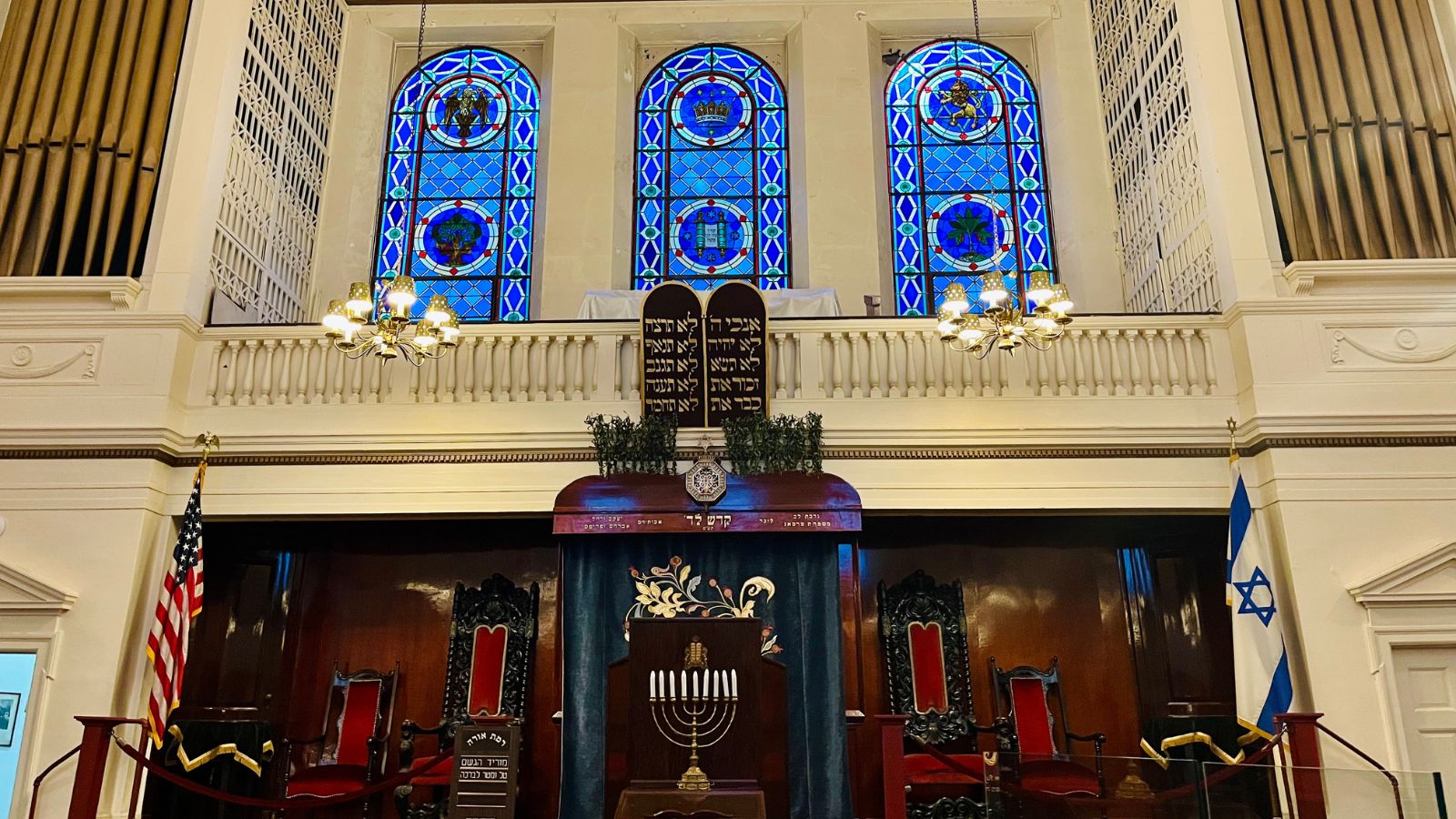
NEW YORK — In 1941, a group of 61 Jewish refugees from Luxembourg arrived in New York City. Narrowly escaping the impending doom of Nazi-orchestrated extermination camps in East Germany, the group fled to Lisbon, then sailed across the Atlantic to seek refuge in the United States.
Despite pressures to assimilate fully into American culture, the refugees clung to their traditions, their community and their faith. The rabbi who coordinated their escape, Dr. Robert Serebrenik, found a half-completed Unitarian Church on the Upper West Side at 550 W 110th St. The church construction had been abandoned, and Serebrenik saw an opportunity. He purchased it and named the new synagogue Ramath Orah, “mountain of light” in Hebrew — a direct translation of Luxembourg, the home they had left behind.
In the looming space, the community gathered to pray, sing and eat. They rested from Friday evening to Saturday evening for Shabbat, and around sundown on Saturday, held maariv and havdalah to prepare for the week of work ahead.
Today, more than 80 years after the founding of the synagogue, those traditions continue. As the sun was setting on a recent Saturday evening, a 16-year-old named Ziv Siegel lights a thick white candle for Havdalah. Organ pipes from the unfinished church line the walls behind him, and the last rays of sunlight filter through a circular yellow and blue stained glass window gifted to the congregation by the government of Luxembourg.
Ziv begins to sing, and the small congregation who had gathered in the room, men and women separated by a cloth divider, joins in.
Baruch atah, Adonai Elohenu
Melech haolam
Borei p’ri hagafen
The melody is chillingly beautiful and drifts up to the high arching ceilings of the synagogue. The candlelight flickers on Ziv’s eyelids as he sings, his head bent down.
Congregants gather around him to observe the candlelight on their hands, flipping their palms back and forth and bending their fingers as if to beckon the light. The motion is a reminder of the light in the week and in life. To Ziv, this marks a departure from Shabbat, because lighting a candle is work that is forbidden during the prior day.
Ziv drinks the cup of wine, which seems to actually be grape juice, as a metaphor for the sweetness of the day of rest. Congregants sniff white mesh drawstring pouches filled with spices — one person says it’s cinnamon and cloves, another has no idea but says it smells nice — which fill the nostrils with a rich, earthy essence. During Shabbat, according to Ziv, the Talmud says a new soul comes to the body — a soul that brings peace, calm and rest. During havdalah, that soul departs. In order to rejuvenate the dormant souls tasked to work throughout the week, congregants smell the decadent spice. So begins the week ahead.
After Havdalah, Ziv and his father, Jonathan Siegel, say that the ceremony is a separation between holy time and the everyday. Ziv, who commutes an hour to an Orthodox Jewish school in Riverdale every day, says he feels deeply connected to the synagogue and the community. “It’s a lot of pressure,” he says about leading Havdalah. But the ritual, a quiet acknowledgement of the dichotomy of work and rest, peace and chaos, has given congregants over the decades a moment to acknowledge the passage of time, from the refugees who fled certain death in Europe to young practitioners like Ziv who are keeping their memories alive.
